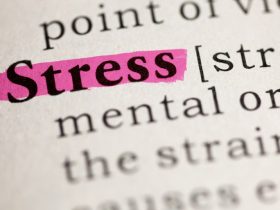The Rise of Social Media Surveillance
In today’s digital age, social media is a significant part of many people’s lives. Insurance companies have picked up on this trend, using these platforms as a tool to monitor claimants. They often scrutinize social media activity to find evidence that might contradict a disability claim. For instance, a photo of a claimant enjoying a family gathering might be used to challenge their reported limitations. This surveillance can be invasive, yet it’s a reality that claimants must navigate when filing disability claims.
Legal Implications of Social Media Evidence
The use of social media in disability claims brings up several legal questions. Courts are increasingly considering social media posts as legitimate evidence, which can either support or undermine a claim. Claimants must be aware that anything posted online, even if set to private, could potentially be accessed and used in court. This highlights the importance of understanding the legal landscape surrounding social media and disability claims.
Case Studies Highlighting Social Media Impact
Several cases illustrate the impact of social media on disability claims. For example, there have been instances where insurance companies denied claims because the claimant’s social media activity seemed inconsistent with their reported disabilities. These case studies underscore the need for claimants to be cautious about their online presence. By examining these examples, claimants can better understand how their social media activity might be perceived by insurers and courts alike.
How Social Media Posts Can Affect Your Disability Case
Common Missteps on Social Media
Social media can be a minefield for those involved in disability claims. Posting without thinking can lead to major pitfalls. Here are some common mistakes:
- Over-sharing personal activities: Posting about daily activities, even those that seem harmless, can be used against claimants. A picture of you at a family picnic might be interpreted as evidence of physical capability.
- Inconsistent information: If your social media posts suggest a level of activity or lifestyle that contradicts your claim, that’s a red flag.
- Ignoring privacy settings: Many people forget to adjust their privacy settings, leaving their profiles open for insurers to scrutinize.
Real-Life Examples of Social Media Misuse
There have been numerous cases where social media has played a pivotal role in disability cases. For instance, a claimant who posted about a hiking trip found their benefits questioned because the activity seemed inconsistent with their claimed limitations. Another individual shared a video dancing at a wedding, which led to a reevaluation of their disability status. These instances underscore the importance of being cautious online.
Strategies to Mitigate Risks
To protect oneself, individuals should consider several strategies:
- Review privacy settings: Ensure that only trusted friends and family can view your posts.
- Think before posting: Ask yourself if a post could be misconstrued or taken out of context.
- Limit check-ins and tags: Avoid tagging locations or allowing others to tag you in posts that might not align with your claimed condition.
- Maintain consistency: Ensure that your online presence doesn’t contradict your disability claims.
By being mindful of these strategies, claimants can better manage their social media presence and minimize potential negative impacts on their disability cases. For more insights, consider how social media posts can significantly affect long-term disability claims.
Insurance Companies and Social Media Monitoring
Why Insurers Monitor Social Media
In today’s digital age, insurance companies are increasingly turning to social media as a tool for monitoring claimants. This practice is aimed at identifying inconsistencies between a person’s online presence and their disability claims. Insurers argue that by doing so, they can protect themselves from fraudulent claims and ensure that payouts are justified. However, this surveillance can often feel invasive to those under scrutiny.
Techniques Used in Social Media Surveillance
Insurance companies employ a variety of techniques to monitor social media activity:
- Public Information Access: Insurers can easily access publicly available information on platforms like Facebook, Instagram, and Twitter.
- Anonymous Browsing: By using dummy accounts, investigators can look at profiles without alerting the user.
- Private Investigators: Some companies hire professionals who specialize in gathering data from social media.
- Monitoring Software: Advanced tools can track specific keywords or gather data from multiple platforms efficiently.
These methods allow insurers to gather a wealth of information, often leading to challenges in claims based on the content found online.
Legal Boundaries and Ethical Concerns
While insurance companies have the right to protect their interests, there are legal and ethical boundaries that must be respected. Using deception to gain access to private information is generally prohibited. Moreover, there are privacy laws that restrict how and what kind of data can be collected. It’s crucial for claimants to be aware of these rights and to consult with a legal professional if they believe their privacy has been violated. For those navigating long-term disability claims, understanding ongoing long-term disability representation is essential to ensure their rights are protected throughout the process.
Protecting Your Privacy on Social Media
Adjusting Privacy Settings Effectively
In the age of social media, safeguarding your privacy is more important than ever, especially if you’re dealing with a long-term disability claim. Adjusting your privacy settings is a simple yet powerful step. Make sure to review and tweak these settings regularly. Set your accounts so only friends can see your posts. Consider limiting who can send you friend requests and who can see your friends list. It’s also wise to remove personal info like your address or phone number from your profile. This way, you can better protect yourself from unwanted scrutiny.
Understanding Public vs. Private Information
It’s crucial to know what’s considered public and what’s private on your social media. Even if your settings are strict, some info might still be visible to the public. Double-check what details are out there for everyone to see. Regularly review your profiles and remove anything that might be used against you in a claim. Remember, once something is online, it can be hard to take back.
The Importance of Online Discretion
Being cautious about what you share online is key. Avoid posting about your health or activities that might contradict your disability claim. Think before you post pictures of yourself doing physical activities or attending events. Insurance companies might use these as evidence against you. It’s also smart to be careful in comments and discussions, especially about sensitive topics. Use discretion to keep your personal life private and protect your claim.
To further safeguard your personal information, consider using strong passwords and always logging out of shared devices. These steps are essential for keeping your online presence secure.
Legal Advice for Managing Social Media During Claims
Consulting with Disability Attorneys
When dealing with a disability claim, it’s wise to consult with legal experts who understand the nuances of social media’s impact on such cases. Consulting legal expertsduring personal injury claims can be crucial. They can guide you on what to share online and what to keep private. A seasoned attorney will help you navigate the complexities of digital evidence, ensuring your social media activity doesn’t inadvertently harm your claim. They can also inform you about legal precedents where social media content played a pivotal role, either positively or negatively.
Guidelines for Social Media Use
Handling social media during a disability claim requires caution and strategy. Here are some guidelines to consider:
- Adjust Privacy Settings: Make sure your profiles are as private as possible. This limits who can view your posts and personal information.
- Be Mindful of Posts: Avoid sharing details about your health or activities that might contradict your disability claims. Even seemingly innocent posts can be misinterpreted.
- Limit Interactions: Be selective about who you connect with online. Avoid engaging with strangers or accepting friend requests from unknown individuals.
Handling Social Media Evidence in Court
In legal proceedings, social media posts can serve as evidence. Understanding how this digital evidence is utilized in court is vital. Posts can either support or undermine your credibility, so it’s essential to maintain consistency between your online presence and your claim. If discrepancies arise, they could be used against you, potentially jeopardizing your case. Therefore, maintaining a coherent narrative across all platforms is not just advisable but necessary. For more insights into how social media impacts personal injury claims, consider exploring how digital evidence is utilized in legal contexts.
The Consequences of Inconsistent Social Media Activity
Identifying Inconsistencies in Claims
In the world of disability claims, consistency is key. Insurance companies are increasingly turning to social media to identify discrepancies between what claimants say and what they post online. For instance, if someone claims they are unable to walk long distances but then posts photos of a hiking trip, insurers might see this as a red flag. It’s important to remember that even minor inconsistencies can lead to significant issues, such as claim denial.
Impact of Social Media on Credibility
Your online presence can greatly affect your credibility in the eyes of insurers. They scrutinize social media posts to find any evidence that might suggest a claimant is exaggerating their disability. For example, a cheerful photo at a party might be interpreted as evidence that a claimant’s condition isn’t as severe as reported. This kind of scrutiny can undermine a claimant’s credibility and potentially lead to a denial of benefits.
Preventing Misinterpretations of Online Content
To avoid misinterpretations, claimants should be cautious about what they share online. Here are some steps to consider:
- Review Privacy Settings: Ensure that your social media profiles are as private as possible. This limits who can see your posts and reduces the chance of insurers misinterpreting them.
- Think Before Posting: Consider how a post might be perceived by someone who doesn’t know your full situation. Avoid sharing anything that could be taken out of context.
- Clarify Context: If you do post something that might be misconstrued, provide context to clarify your situation. For instance, label older photos accurately to prevent insurers from assuming they represent your current condition.
By taking these precautions, claimants can protect themselves from having their social media activity used against them in disability claims.
Best Practices for Social Media Use During Disability Claims
Regularly Reviewing Your Online Presence
Staying on top of your social media profiles is key during a disability claim. Regularly checking your posts ensures that nothing contradicts your claim. Think about it: if you’re saying you can’t walk, but there’s a recent photo of you hiking, that’s not going to look great. Make it a habit to review your profiles and clean up anything that might be misinterpreted. A quick scroll through your history every month can save you a lot of hassle.
Avoiding Common Pitfalls
Social media might seem harmless, but it can be a minefield. Here are a few common mistakes to avoid:
- Over-sharing: It’s tempting to post about your day, but keep details about your health and daily activities to yourself.
- Ignoring Privacy Settings: Make sure your profiles are private. Only people you trust should see your posts.
- Posting old photos without context: If you post an old photo, make sure it’s clear it’s not recent to avoid confusion.
Maintaining Consistency with Your Claim
Your social media should reflect your situation accurately. If your claim says you’re struggling with mobility, your posts shouldn’t paint a different picture. Consistency is crucial. This means being mindful of what you post and how it might be perceived. A night out with friends might seem innocent, but it could be twisted to suggest you’re in better health than you claim. Always think twice before hitting “post” to ensure it aligns with your current situation.
The Psychological Impact of Social Media Surveillance
Stress and Anxiety from Being Monitored
Living under the watchful eye of social media surveillance can be nerve-wracking. People often feel like they’re being judged for every post, every “like,” and every comment. This constant monitoring can lead to heightened stress and anxiety levels. Knowing that insurance companies might be watching your every move online can make even the most mundane activities feel like they’re under a microscope. Imagine posting a picture of a family picnic, only to worry about whether it contradicts your disability claim. This kind of pressure can weigh heavily on anyone’s mental health.
Balancing Social Media Use and Privacy
Finding the right balance between staying connected and maintaining privacy is tricky. On one hand, social media is a great way to keep in touch with friends and family. On the other hand, every post is a potential piece of evidence that can be used against you. It’s crucial to adjust privacy settings effectively, but even then, there’s no guarantee that your information won’t be accessed by insurers. People need to weigh the benefits of social media against the risks it poses to their privacy and mental well-being.
Coping Mechanisms for Claimants
For those dealing with the stress of surveillance, developing coping mechanisms is essential. Here are a few strategies:
- Limit Social Media Use: Reducing the time spent on social media can help decrease anxiety. Consider setting specific times for checking your accounts.
- Stay Informed: Understanding how extensive social media use impacts mental health can encourage more mindful usage.
- Seek Support: Talking to a therapist or joining a support group can provide emotional relief and practical advice.
By implementing these strategies, individuals can better manage the stress and anxiety associated with social media surveillance.
Future Trends in Social Media and Disability Claims
Emerging Technologies in Surveillance
As technology continues to advance, the methods used by insurance companies to monitor social media are becoming more sophisticated. Artificial intelligence and machine learning are increasingly being employed to analyze vast amounts of data quickly and efficiently. These technologies can detect patterns and inconsistencies in a claimant’s online activities that might otherwise go unnoticed. Additionally, facial recognition technology is being used to identify individuals in photos, even if they are not tagged. This means that claimants need to be more vigilant than ever about their online presence.
Potential Changes in Legal Frameworks
With the growing use of social media surveillance, there is a push for changes in the legal frameworks governing privacy and data protection. Lawmakers are considering new regulations that would limit the extent to which insurers can use social media data in their assessments. These changes aim to protect individuals’ privacy rights while ensuring that insurance companies can still verify claims effectively. However, until these laws are enacted, claimants must be aware of the current legal landscape and how it might affect their cases.
Preparing for Evolving Social Media Landscapes
The social media landscape is constantly evolving, with new platforms emerging and existing ones changing their features. Claimants must stay informed about these changes and understand how they might impact their disability claims. Here are a few strategies to consider:
- Regularly review and update privacy settings on all social media accounts.
- Be cautious about the content you post, especially if it could be interpreted as contradicting your disability claim.
- Consider consulting with a disability attorney to understand how your social media activity might affect your case.
Staying proactive and informed can help claimants navigate the complex intersection of social media and disability claims effectively.
Additional Information Sources








